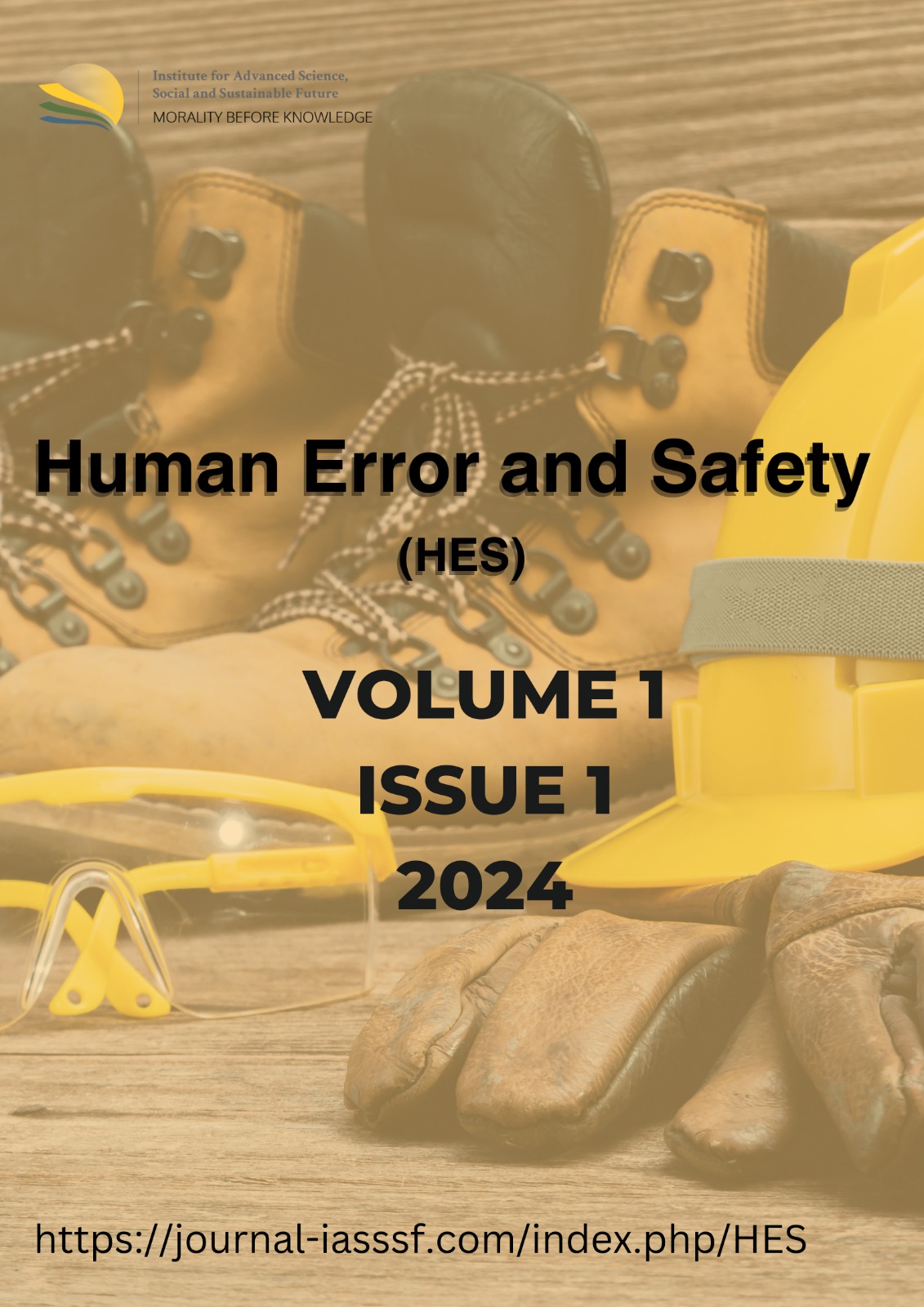Air pollution threatens health and climate change in Jakarta
DOI:
https://doi.org/10.61511/hes.v1i1.2024.648Keywords:
air pollution; Air Quality Index (AQI); climate change; PM 2.5.Abstract
Background: Currently air pollution is one of the main problems in Jakarta. Due to the lifestyle of the people of Jakarta who are more consumptive of vehicles and also the number of skyscrapers so that this has an impact on increasing air pollution which results in climate change and also become one of the causes of decreased child health. The purpose of this research is to determine the air pollution in Jakarta through the NAFAS application, whether or not it is in accordance with global air quality standards. Methods: The data of this study are Air Pollution Particles of PM 2.5. while samples are taken periodically for up to a month. Findings: One of the particles in air pollution that is being discussed is PM 2.5. PM 2.5 comes from both natural and human sources. Particulate matter (PM) is a type of particle that consists of solid or liquid droplets found in the air. Conclusion: These particles are also sometimes referred to as aerosols. These particles come from both natural and human sources, such as fields, fires,dirt roads, and construction sites. Many particles are formed in the air as a result of complex reactions caused by chemicals in the atmosphere from sources such as power plants, factories, and vehicles.
References
Abidin, J., & Hasibuan, E. A. (2022). Pentingnya Kesadaran untuk Peduli untuk Menjaga dan Melestarikan Lingkungan. Jurnal Nauli, 1(3), 59-65. https://jurnal.ugn.ac.id/index.php/jurnalnauli/article/view/921
Anggraini, A. N., Ummah, N. K., Fatmasari, Y., & Holle, K. F. H. (2022). Air Quality Forecasting in DKI Jakarta Using Artificial Neural Network. MATICS: Jurnal Ilmu Komputer dan Teknologi Informasi (Journal of Computer Science and Information Technology), 14(1), 1-5. https://doi.org/10.18860/mat.v14i1.13863
Air pollution and child health: prescribing clean air. https://www.who.int/publications/i/item/WHO-CED-PHE-18-01
Air Quality Life Index. 2019. Indonesia’s Worsening Air Quality and its Impact on Life Expectancy. https://aqli.epic.uchicago.edu/wp-content/uploads/2019/03/Indonesia-Report.pdf
Air Quality Life Index. 2020. 2020 Annual Update. https://aqli.epic.uchicago.edu/wp-content/uploads/2021/08/AQLI_2020_Report_2021-spring-update.pdf
Anenberg, S. C., Henze, D. K., Tinney, V., Kinney, P. L., Raich, W., Fann, N., ... & Kuylenstierna, J. C. (2018). Estimates of the global burden of ambient PM 2.5, ozone, and NO 2 on asthma incidence and emergency room visits. Environmental health perspectives, 126(10), 107004. https://doi.org/10.1289/EHP3766
Breathe Jakarta. 2020. Sensor Report: June 2020. https://nafas.co.id/article/How-is-Jakarta-s-air-quality
Childrenexposed to five times more air pollution on school run. https://www.kcl.ac.uk/news/children-exposed-to-five-times-more-air-pollutionon-school-run
Della Ertiana, E. (2022). Dampak Pencemaran Udara terhadap Kesehatan Masyarakat: Literatur Review. Jurnal Ilmiah Permas: Jurnal Ilmiah STIKES Kendal, 12(2), 287-296. https://journal2.stikeskendal.ac.id/index.php/PSKM/article/view/10
Fikri, E. (2022). Pencemaran Udara dan Dampaknya Bagi Kesehatan. https://repository.penerbiteureka.com/publications/352426/pencemaran-udara-dan-dampaknya-bagi-kesehatan
Greenpeace. 2017. https://www.greenpeace.org/indonesia/siaran- pers/1320/jakarta-dikepung-emisi-batubara/
Greenstone, M., & Fan, Q. (2019). Kualitas udara Indonesia yang memburuk dan dampaknya terhadap harapan hidup. The University of Chicago. https://aqli.epic.uchicago.edu/wp-content/uploads/2019/03/Indonesia.Indonesian.pdf
Grineski, S. E., Collins, T. W., & Adkins, D. E. (2020). Hazardous air pollutants are associated with worse performance in reading, math, and science among US primary schoolchildren. Environmental Research, 181, 108925. https://doi.org/10.1016/j.envres.2019.108925
How Weather Affects Air Quality | UCAR Center for Science Education. Scied.ucar.edu. https://scied.ucar.edu/learning-zone/air-quality/how-weather-affects-air-quality
Janhäll, S. (2015). Review on urban vegetation and particle air pollution – Deposition and dispersion. Atmospheric Environment, 105, 130–137. https://doi.org/10.1016/j.atmosenv.2015.01.052
Jin, S., Guo, J., Wheeler, S., Kan, L., & Che, S. (2014). Evaluation of impacts of trees on PM2.5 dispersion in urban streets. Atmospheric Environment, 99, 277–287. https://doi.org/10.1016/j.atmosenv.2014.10.002
Latief, M. A., & Karyanti, Y. (2022). Data Mining & Analytic Forecasting Indeks Standar Pencemar Udara Jakarta Menggunakan Metode Linear Regression (Studi Kasus: Dataset Indeks Standar Pencemar Udara Jakarta 2021). Journal of Social Research, 1(10), 1164-1176. https://doi.org/10.55324/josr.v1i10.248
Mullen, C., Grineski, S. E., Collins, T. W., & Mendoza, D. L. (2020). Effects of PM2.5 on Third Grade Students’ Proficiency in Math and English Language Arts. International Journal of Environmental Research and Public Health, 17(18), 6931. https://doi.org/10.3390/ijerph17186931
Neve, V., Girard, F., Flahault, A., & Boule, M. (2002). Lung and thorax development during adolescence: relationship with pubertal status. European Respiratory Journal, 20(5), 1292–1298. https://doi.org/10.1183/09031936.02.00208102
Nowak, D. J., Hirabayashi, S., Bodine, A., & Hoehn, R. (2013). Modeled PM2.5 removal by trees in ten U.S. cities and associated health effects. Environmental Pollution, 178, 395–402. https://doi.org/10.1016/j.envpol.2013.03.050.
Raza, W., Fprsberg, B., Johansson, C., & Sommar, J. N. Potential of neural networks for air quality sensor data processing and analysis. https://ibn.idsi.md/sites/default/files/imag_file/p-135_0.pdf
Ruhiat, F., & Heryadi, D. (2019). Strategi NGO Lingkungan Dalam Menangani Polusi Udara di Jakarta (Greenpeace Indonesia). Andalas Journal of International Studies (AJIS), 8(1), 16-30. https://doi.org/10.25077/ajis.8.1.16-30.2019
Simandjuntak, A. G. (2013). Pencemaran udara. Buletin Limbah, 11(1). https://jurnal.batan.go.id/index.php/bl/article/view/785
Simarmata, M. M., Asmuliani, R., Pasanda, O. S., Marzuki, I., Soputra, D., Sudasman, F. H., ... & Armus, R. (2022). Pengantar Pencemaran Udara. Yayasan Kita Menulis. https://kitamenulis.id/2022/07/25/pengantar-pencemaran-udara/
Supra and Reddington, C.L. et al. 2014. ‘Contribution of vegetation and peat fires to particulate air pollution in Southeast Asia’, Environmental Research Letters 9(9). https://dspace.mit.edu/handle/1721.1/92792
Surury, I., Azizah, M., & Prastiwi, N. D. (2022). Spatial Analysis of Acute Respiratory Infection (ARI) Based On the Air Pollution Standard Index (PSI) at DKI Jakarta Region in 2018-2019. JURNAL KESEHATAN LINGKUNGAN, 14(2), 90-98. https://e-journal.unair.ac.id/JKL/article/view/30847
V., Pun, S., Mehta, & R., Dowling. (2019). Air pollution and child stunting–a systematic review and meta-analysis. Environmental Epidemiology, 3, 318. https://doi.org/10.1097/01.ee9.0000609484.16985.4a
Wellness, H. &, Diseases, L. H. and, & Science. An Amazing Journey: How Young Lungs Develop. https://www.lung.org/blog/how-young-lungs-develop
WHO. https://public.wmo.int/en/resources/bulletin/air-quality-and-human-health-priority-joint-action
Wong, L. T., Mui, K. W., & Tsang, T. W. (2022). Updating Indoor Air Quality (IAQ) Assessment Screening Levels with Machine Learning Models. International Journal of Environmental Research and Public Health, 19(9), 5724.
Downloads
Published
Issue
Section
Citation Check
License
Copyright (c) 2024 Human Error and Safety

This work is licensed under a Creative Commons Attribution 4.0 International License.











